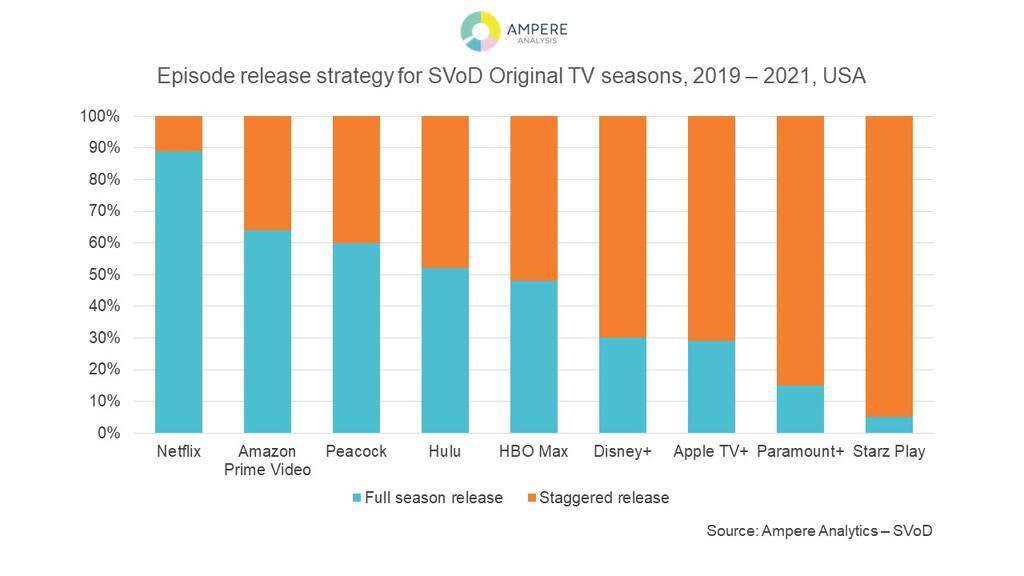Streamers Move to Weekly Episode Releases to Battle Churn
A weekly release schedule limits subscriber churn and better maintains engagement with content over time, according to a new report by Ampere Analysis

LONDON—As streaming platforms seek to address high churn rates, a growing number of streamers are moving away from simultaneously offering a full season of episodes for binge viewing to a strategy of releasing new episodes on a weekly basis, according to a new report from Ampere Analysis.
That report noted that in contrast to Netflix’s strategy of full season releases, mirrored by other platforms like Amazon and Hulu, a wave of new SVOD entrants are employing the classic model of gradual episode releases for their own original titles.
While the trend may be only temporary, Ampere found that a weekly release schedule limits subscriber churn and better maintains engagement with content over time. The strategy is also helping to eke out perceived value in smaller catalogs.
Rahul Patel, senior analyst, explained that “a weekly release pattern more easily facilitates conversation around a show. Between episodes, viewers have ample time to discuss and re-watch episodes, which is less likely to be the case if an entire season is released together. Hence, weekly releases can lessen the chance of engagement with a show decaying rapidly after its initial release. By extension, weekly releases can benefit lower profile titles—particularly those not based on recognisable Intellectual Property—as positive word of mouth sentiment has more time to build and spread. By releasing the totality of an unknown season in one stroke, a platform runs the risk of the title being crowded out in an increasingly competitive content market.”
One reason for the move to weekly releases by new platforms is the size of their overall on-demand library, Ampere reported.
At launch, the U.S. Disney+ catalog was 10% the size of Netflix’s by total duration, while HBO Max’s was 26% and Apple TV+’s less than 1%.
In addition, the number of flagship Originals available in the first months of launch was also limited, especially due to delays caused by COVID-19-related production shutdowns.
Get the TV Tech Newsletter
The professional video industry's #1 source for news, trends and product and tech information. Sign up below.
The move to a weekly release strategy across a range of high-profile Originals reduced the risk of churn over time, the report found. For example, Disney+ released episodes of new Marvel Cinematic Universe TV shows across 34 weeks in 2021. A fan of Marvel content wanting to avoid the plotlines being spoiled would have to subscribe to Disney+ for the majority of the year to watch each episode at the earliest opportunity.
The report also found that engagement declined faster for full-season releases. The Ampere Popularity Score indicated that engagement with a TV show decays faster for full-season releases when indexed against their popularity at launch.
Comparing top Netflix (full-season releases) with HBO (weekly releases) shows, Ampere found that the popularity of the former dropped to 80% of the premiere month within one month of release compared to four months for the latter.

George Winslow is the senior content producer for TV Tech. He has written about the television, media and technology industries for nearly 30 years for such publications as Broadcasting & Cable, Multichannel News and TV Tech. Over the years, he has edited a number of magazines, including Multichannel News International and World Screen, and moderated panels at such major industry events as NAB and MIP TV. He has published two books and dozens of encyclopedia articles on such subjects as the media, New York City history and economics.

